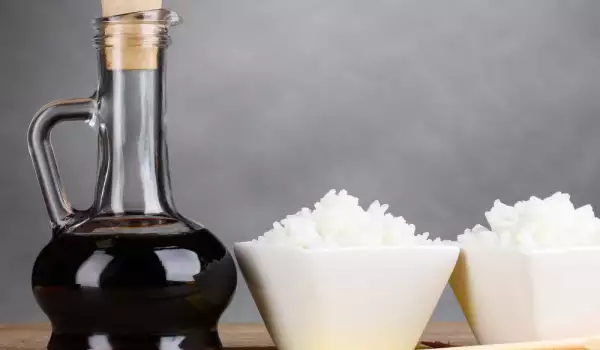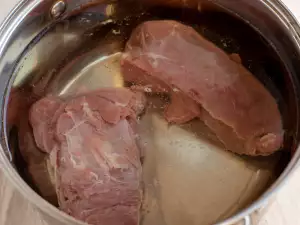Soy sauce is perhaps the most famous and integrated Asian product in the world. There is no one who has not tried it as a flavoring for the famous Chinese rice or with various meat and vegetables and also as a component of dressings and marinades. It adds an authentic and specific salty flavor and enhances the taste of the products to which it is added.
Without a doubt, the fact, that soy sauce is so popular around the world speaks to the fact, that it is also affordable and easy to find in the grocery store. However, now is the time to note that there are about 20 different types, which can be found in specialty stores.
Most of them are prepared by a fermentation process of soybean and wheat grains with the fungus Aspergillus oryzae plus water and salt.
However, there are also the so-called artificial or chemically obtained soy sauces, which are made from soybean flour, malt extract, colorants, etc. They are prepared much faster and are, respectively, at a more affordable price. Often, it is this version of soy sauce, which is the most common in ordinary stores and is present in our homes.
That is why it is recommended, if we like soy sauce, to try to make it at home to make sure that it is a real and quality product and will not harm our health.
The process of making soy sauce is long, but definitely worth the wait.
Homemade soy sauce
Products:
240 g wheat flour
350 g soybeans
3 L of water
salt - by taste
Preparation:
1. Soak the soybeans in cold water for 1 night;
2. Strain and pour fresh water - enough to cover the soybeans well. Boil for 4-5 hours on moderate heat;
3. Check if the soybeans are well cooked by rubbing a bean between your fingers, which should crush easily. If it shows resistance, continue cooking as long as necessary;
4. Blend or grind the soybeans into a puree;
5. Add the flour and knead a compact dough;
6. Roll up the dough and cut it into several small portions;
7. Put it in a suitable wide tray or plate, cover it with a clean cloth and leave in a room with a temperature of 30°C, until mold starts to form - about 1 and a half weeks;
8. Put the pieces of dough in an oven at a low temperature - 60°C, until they dry out;
9. In a large container, pour the water and add the salt. Add the dried soy chunks;
10. Cover the container with a thin cloth or cling film and leave it to ferment. This process takes several days and stir at least once a day.
11. Fermentation has occurred when the color of the liquid becomes dark and thick - characteristic of soy sauce and the solid pieces of dough have gone to the bottom.
12. Strain the liquid through a fine strainer and you can consume it directly or store it in glass bottles.
Advice:
To speed up the mold formation process from the 7th step of the recipe, there is an option to add already formed spores known as koji. This product can be purchased from specialty stores for organic products or ordered from the Internet, but only from reliable sources!
Homemade soy sauce will surprise you with its wonderful taste, and it will also bring benefits to your body. It contains fiber, protein, essential fatty acids and antioxidants.
Also, naturally prepared soy sauce is rich in lecithin, which is involved as a food supplement that helps the brain and heart function well, controls blood lipid levels and fat accumulation.
With our homemade soy sauce, we can prepare many recipes, because it adapts perfectly to any meat, vegetables, fish and rice.
Also add it to marinades, dressings and as a component to other sauces, for example Teriyaki.
Soy sauce can also be used to make vegetable spreads and dips to spread on toast or crackers by adding it to cream cheese and grinded nuts.



















Comments